The Gone Sounds of Jazz with Sid Gribetz
An archive of jazz radio programs focused on intensive in-depth looks at great themes from jazz history. Winner of the Jazz Journalist Association Award for Career Excellence, Sid has been broadcasting for over 40 years on WKCR-FM, NYC. He was also voted ’Best Jazz DJ’ by the Village Voice in its 2008 Best Of NY Issue.
Episodes
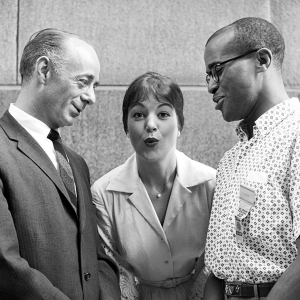
4 days ago
Lambert Hendricks & Ross
4 days ago
4 days ago
This program presents the vocal magic of Lambert Hendricks and Ross.Lambert Hendricks and Ross brought the art of ensemble group vocals to a higher level. Bebop singers Dave Lambert, Jon Hendricks and Annie Ross each individually were pioneers of vocalese, the style of writing lyrics to recorded instrumental solos to create new songs. The synergy of the group was even more remarkably creative.Dave Lambert already had What’s This?, Annie Ross had Twisted, and Jon Hendricks had his start with King Pleasure, among other early impacts on the scene. Then Dave and Jon were working on a project of a vocal chorus Basie album when they chose to combine forces with Annie Ross to replace the choir idea with just a trio. Their 1957 LP “Sing A Song Of Basie” was an immediate hit. It was followed by so much further popular success that when signed by Columbia Records it was no exaggeration to be billed “The Hottest New Group in Jazz”, and Hendricks was dubbed “The Poet Laureate Of Jazz”.They swung emphatically, wrote literate and witty lyrics, fluidly blended their ensemble singing, and had distinct, great, individual voices.Their vocalese lyrics to so many other songs of Ellington, Horace Silver, and more, have become classics of the genre.
The group stayed together until Annie Ross departed in 1962. LHR left a magnificent legacy that is explored in this five hour presentation.
originally broadcast June 22, 2025
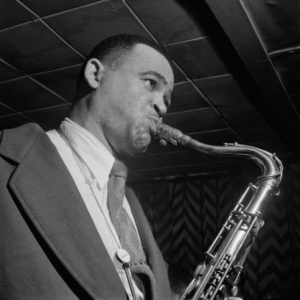
Thursday Jun 12, 2025
Arnett Cobb
Thursday Jun 12, 2025
Thursday Jun 12, 2025
Arnett Cobb was a full-bodied, hard swinging musician with a warm, soulful sound that exemplified the tough, Texas, tenor tradition. During his career, Cobb overcame deep personal setbacks, experiences that lent an emotional insight and intensity to his artistic expression.
He was born in Houston, Texas on August 10, 1918 and began playing all sorts of music as a child. Cobb was proficient enough to play professionally in touring bands during summer vacations in high school, in the heart of the Great Depression. Upon graduating high school, Cobb began his career in earnest, notably with the Milt Larkin orchestra, a Texas-based band that was a breeding ground for many great swing and blues musicians. Cobb’s fame grew, but he turned down many job offers from nationally famous bands, preferring to stay with Larkin.
By 1942, however, Cobb was impressed to join Lionel Hampton’s organization, taking over Illinois Jacquet’s tenor sax chair. Cobb made his own dynamic impact with Hamp, and bravely recorded his own hit record version dubbed “Flying Home No.2". With the infectious excitement that he conveyed, Cobb became known at times as “The Wild Man Of The Tenor Sax” .
After the war, Cobb left Hampton and embarked on his solo career, leading a small combo booked as a national attraction. In that context, he recorded notable records in the jazz and early R&B vein for Apollo, Columbia, and Atlantic Records. He recorded his signature composition “Smooth Sailing” (made even more famous by Ella Fitzgerald’s cover record) and also backed singers such as Eddie Cleanhead Vinson and Ruth Brown. During this period, though, Cobb encountered his first setback, as a childhood spinal injury flared up, necessitating multiple operations and leaving him bedridden for over 15 months.
Beginning a new comeback, Cobb was again waylaid when, in 1956, he was severely injured in an automobile accident, that crushed both of his legs. Confined thereafter to braces and crutches that restricted his mobility for the rest of his life, Cobb returned to his native Houston where he ran a nightclub, consulted and did musical arrangements for many young acts, and still played his tenor sax. In 1959 and 1960 he made a series of solid mainstream jazz records for Prestige, but thereafter mostly stayed local.
With the traditional jazz revival that began in the early 1970's, Cobb started touring again, managing to make frequent trips to New York and the European continent to perform and record with many old compatriots, a regimen that continued until his death at the age of 70 in 1989.
Originally broadcast November 15, 2015; rebroadcast August 1, 2021

Thursday Jun 05, 2025
Billie Holiday 4
Thursday Jun 05, 2025
Thursday Jun 05, 2025
My segment from the 2025 edition of WKCR's annual Billie Holiday birthday special: The first hour is a potpourri of recordings for casual listening pleasure. It’s followed by a two hour presentation of a detailed survey of Billie’s sessions for the Commodore and Decca labels in the 1940s.
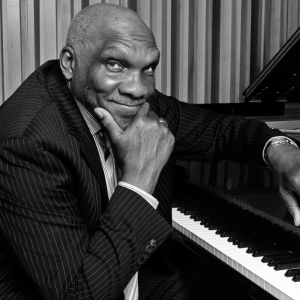
Friday May 30, 2025
Harold Mabern
Friday May 30, 2025
Friday May 30, 2025
Five hours of the soulful jazz pianist Harold Mabern.
Mabern was born March 20, 1936 in Memphis and raised in that Southern town, surrounded by many great young jazz players. Mabern’s own mentor and friend, only a couple of years older, was Phineas Newborn. His schoolmates and lifelong associates included Frank Strozier, George Coleman, and Booker Little.
Shaped by the indigenous rhythm and blues and southern soul, this cadre of Memphis musicians brought these influences as another hard driving layer to the vocabulary of modern jazz of the 1950's and 1960's.
Mabern moved to Chicago after high school for formal musical training, and with Strozier helped form the group the MJT + 3. Next, Mabern came to New York, making his mark on our jazz scene in the 1960's. He quickly gained national renown, as well. Mabern was an important contributor to groups led by Lee Morgan, Wes Montgomery, The Jazztet, and (briefly, with Coleman) Miles Davis. By the end of the decade “Mabes” was signed to Prestige to lead his own recordings. In addition he served as a sideman on many influential records by Roland Kirk, Hank Mobley, and Freddie Hubbard, to name a few.
Moving along in his career, Harold settled in the Brooklyn jazz community. Mabern never sought much fame, but for decades he was an important presence in New York nightclubs and piano rooms, and a leading figure to younger Memphis-ites such as James Williams and Mulgrew Miller. He furthered his influence by teaching at the respected William Paterson College Jazz Program, and Harold also gave less formal lessons through the years, to even younger generations of jazz musicians such as Joe Farnsworth and Eric Alexander.
Harold had a highly percussive and driving, swinging attack at the piano, combined with a romantic, sensitive side, that lent great effect to many groups. He also had an encyclopedic knowledge of both the American popular songbook and classic soul music tunes, as well, which he brought to bear on the lyrical and energetic aspects of his performance style.
Mabern passed away in 2019 at the age of 83.
originally broadcast May 18, 2025
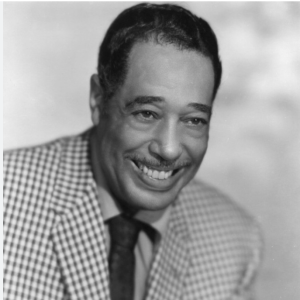
Sunday May 25, 2025
Duke Ellington 1
Sunday May 25, 2025
Sunday May 25, 2025
WKCR presents a marathon broadcast celebrating Duke Ellington annually, on his birthday anniversary, April 29. From my segment in the 2025 edition, here’s 40 minutes of Ben Webster features with Duke, followed by a two hour set of selections from Ellington in the late 1950s and early 1960s.
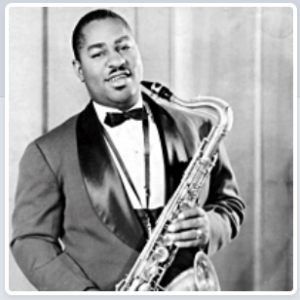
Wednesday May 21, 2025
Chu Berry
Wednesday May 21, 2025
Wednesday May 21, 2025
Although less well known today, tenor saxophonist Leon “Chu” Berry was one of the most vital and vibrant improvising musicians of the Swing Era.
He was an innovator and progenitor of modern saxophone styles, cited as an influence by many insiders. Berry was a leading figure in big bands such as Fletcher Henderson’s, and the featured soloist in Cab Calloway’s famous orchestra. Chu also recorded legendary small group sides, accompanied vocalists such as Billie Holiday and Mildred Bailey on some of their classic recordings, and made some key dates with Roy Eldridge, Teddy Wilson and Lionel Hampton. Unfortunately, he died young, from injuries suffered in an automobile accident, at the age of 33, on October 30, 1941.
Originally broadcast January 6, 2013; rebroadcast February 21, 2021

Monday May 12, 2025
Freddie Redd
Monday May 12, 2025
Monday May 12, 2025
Freddie Redd is perhaps best known for his association with Jack Gelber’s groundbreaking 1959 off-Broadway play “The Connection”. Redd is perhaps least known as an active jazz musician for the following 60 years of his long life. For, he never sought publicity, traveled frequently, and, not favoring the constrictions of the recording studio, did not leave a long discography of commercial recordings.In life, Freddie Redd was a free spirit, and as a musician he possessed an individual sound. His artistry conveyed a story-telling facility, whether in his unique body of compositions or his expressive performance style at the piano. As he came of age is the bebop era, Redd’s sensibility was informed by the youthful excitement he felt with those innovations. Like Monk, Herbie Nichols, Gigi Gryce, or Bud Powell, to name a few, his music at times takes an angular or dissonant turn, only to be grounded, in his essence, with a softer personal lyricism and sensitivity that is all his own.Redd served in the armed forces in the post World War II years and played in musical groups in the service while in Korea. Back home in 1949, he immersed himself in the New York bebop scene. As the 1950's ensued, like many jazz musicians he also played in rhythm and blues bands, with Red Prysock and Cootie Williams among others. By the mid-1950's he was making a jazz name for himself and played on various records (his composition for Joe Roland, “Stairway To The Steinway”, was anthologized). Redd was hired with other American greats by Rolf Ericson for a legendary lengthy tour of Sweden in 1956. Back in the States, he spent time with Charles Mingus and also in the cross cultural Greenwich Village scene with painters and theater folk.The Connection emerged from this scene. Gelber’s verite play observes addicts waiting for the connection to arrive to their loft, and some of whom are jazz musicians who rehearse while waiting. The play was an underground hit, and Redd’s score created the perfect atmosphere for the production, while the music struck a responsive chord with a wider audience. Blue Note Records signed Redd to produce an album of tunes from the show, and followed up with a second recording, Shades Of Redd, even more accomplished, in my view. Redd recorded a third album with Blue Note, but due to differences he had with producer Alfred Lion, it was not released for almost 30 years.As time went on, Redd himself released little music, and his individual spirit led him on many travels, throughout Europe, and also California, staying places for a few years and then moving on. In recent years he was back in the United States, and performed at times at Small’s night club in New York City. In the early 2010's Redd moved to the Baltimore/Washington DC area, where young musicians such as Brad Linde took him under their wing, and vice-versa. Redd then came back to New York, where Chris Byars worked with Redd, writing new arrangements of his tunes, and setting up gigs and recording sessions for him with Steeplechase. Freddie Redd passed away at the age of 92 in 2021.
originally broadcast April 27, 2025
For those interested in more details about Redd’s recordings, a couple of years ago I published his Discography, which you can access here: https://jazzdiscography.com/freddie-redd-discography/
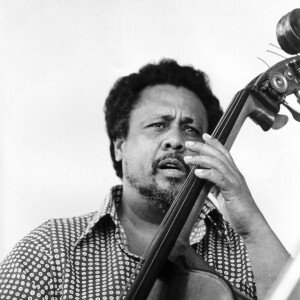
Friday May 02, 2025
Charles Mingus 1
Friday May 02, 2025
Friday May 02, 2025
WKCR presents a marathon broadcast celebrating Charles Mingus annually, on his birthday anniversary, April 22. For my segment on the 2025 edition, I prepared a program first featuring 70 minutes or so of a casual sampling of his classic 1959 recordings, and then followed by a two hour survey of Mingus collaborations with Teddy Charles.

Wednesday Apr 30, 2025
Jimmy Rushing
Wednesday Apr 30, 2025
Wednesday Apr 30, 2025
Jimmy Rushing, “Mr. Five by Five”, was a robust and hearty singer, making full use of his husky frame to deliverlusty presentations whether shouting the blues or imparting his vivacious yet heartfelt style to popular songs.
Rushing was born in Oklahoma City to a middle class, musically inclined family, and his development ranged from proper musical lessons to the sounds of the sporting house.
He came of age in the 1920's during the flowering of the swinging Southwestern jazz style. Notable bands of the period included Walter Page’s Blue Devils and the Bennie Moten group. These coalesced into the original Count Basie orchestra, with whom Rushing was the featured vocalist from 1936 until the big band’s demise in 1950. Rushing then worked regularly at the Savoy Ballroom until briefly retiring in the mid 1950's. He came back as a freelance attraction, often teaming with fellow Basie-ites such as Buck Clayton and Buddy Tate.
Rushing had new life as a regular at the Half Note jazz club in the 1960's, in association with Zoot Sims, Al Cohn and Dave Frishberg. He worked steadily even as failing health curtailed his activities, succumbing to leukemia, dying in June 1972..
originally broadcast November 12, 2017; rebroadcast July 18, 2021
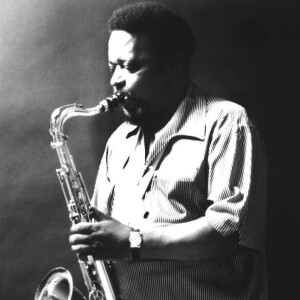
Thursday Apr 17, 2025
Gene Ammons
Thursday Apr 17, 2025
Thursday Apr 17, 2025
Gene Ammons (1925-1974) was a master of the full-bodied deep sound on the tenor saxophone. He was vigorous and free-flowing swinging the blues and presented a luscious and sensuous presentation in his touch on the sensitive standards.
We'll be "Hittin" The Jug" with great soul and heartfelt ballads as well, in tribute to the "Boss", hard hitting tenor saxophone who needs to be remembered.
This program surveys his career from the Billy Eckstine big band to the Chicago rhythm and blues years in the 40s and 50s, his teamwork with Sonny Stitt, and then his prolific catalog of classic jazz recordings on Prestige.
originally broadcast July 22, 2007; rebroadcast February 7, 2021

